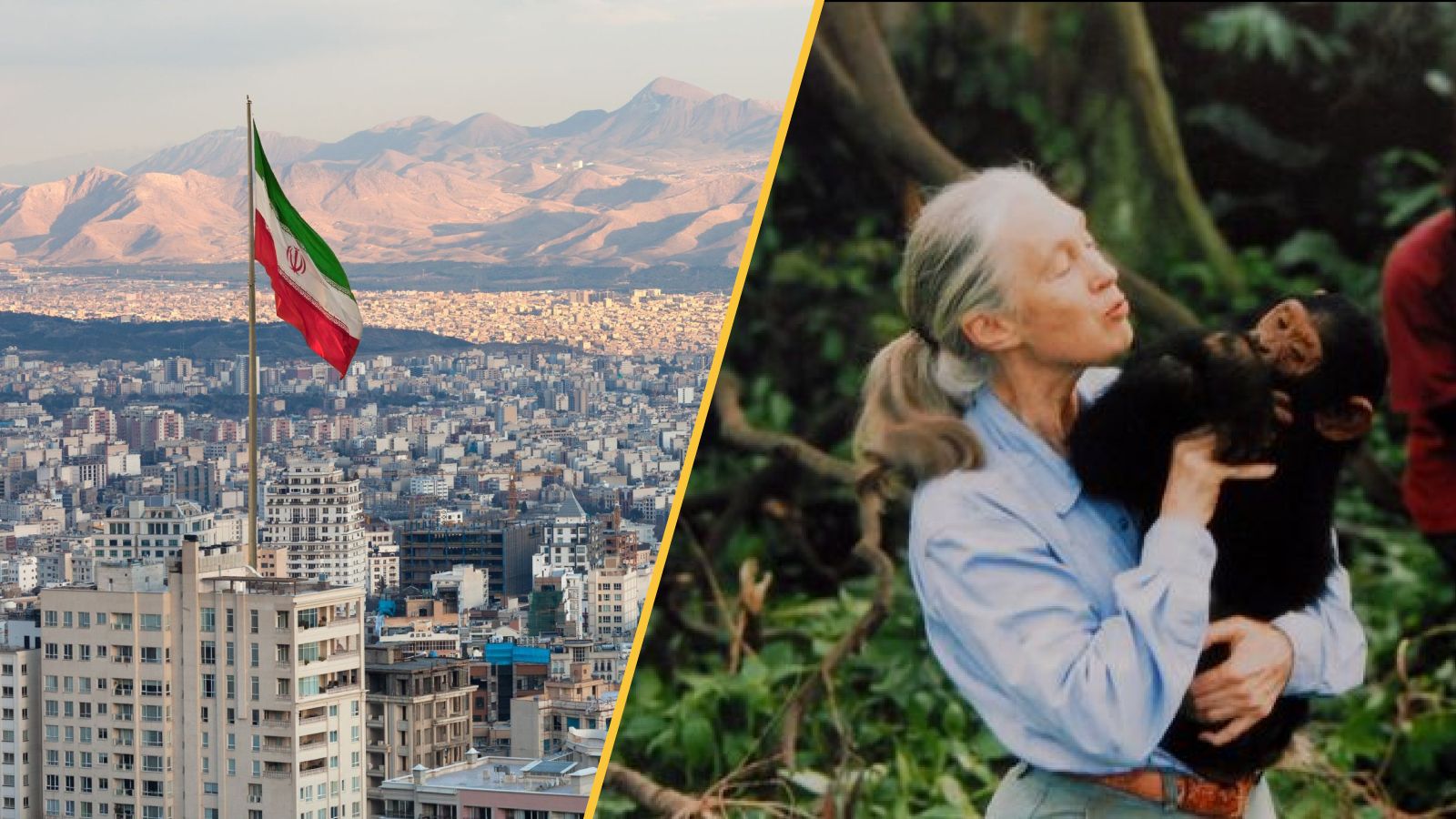Leading our coverage this week was the passing of famed primatologist and conservationist Jane Goodall, who died of natural causes on Wednesday (Oct. 1) at age 91.
Goodall became renowned for her pioneering studies of wild chimpanzees (Pan troglodytes) in Tanzania’s Gombe Stream National Park. She arrived at the park early in her career with no formal academic training in a field dominated by men. But her keen eye, patience and empathy for the chimps under her watch soon enabled her to make a number of groundbreaking contributions that redefined the study of one of our closest living relatives.
These include the discovery of chimpanzee tool use, unique personalities, long-term social relationships and complex strategy and warfare — all traits believed to be uniquely human before Goodall’s observations.
Cities in Iran, and the world, are sinking
A new study has revealed that Iran is subsiding at an alarming rate, with some areas sinking by up to 1 foot (0.3 meters) each year. The cause is the extraction of groundwater for agriculture in many of the country’s drier regions. Besides exacerbating an ongoing drought in Iran, this extraction could expose an estimated 650,000 people to higher risks of water scarcity and food insecurity, according to the study authors.
But this worsening problem is far from Iran’s alone. Major cities in central Mexico, the United States, China and Italy are also seeing their ground sink, with Iran’s peak subsidence rates being shared by Mexico City and California’s Central Valley. This will not only make future droughts more severe in these regions, but could also contribute to disasters such as the deadly collapse of a Mexico City Metro overpass in 2021.
Discover more planet earth news
—When China makes a climate pledge, the world should listen
—The Panama Canal needs a staggering amount of water to operate. Climate change could threaten that, study warns
—Yosemite’s glaciers have survived 20,000 years — but we could be the first people to see Sierra Nevada ice-free
Life’s Little Mysteries

Figs are widely considered to be a truly delicious fruit: an explosion of mild, jammy sweetness … with a possible hint of wasp? Hundreds of species of wasps, most of them the size of the fruit fly, crawl inside figs to reproduce, pollinating the figs in turn in a remarkable instance of ecological mutualism. But does that mean the figs we eat really contain dead wasps? Live Science fig-ured out the answer.
—If you enjoyed this, sign up for our Life’s Little Mysteries newsletter
Embryos made from skin cells
In groundbreaking new research, scientists have created human eggs in the lab using a similar technique to the one used to clone Dolly the sheep. The team then used in vitro fertilization to transform them into embryos, though most didn’t develop for long.
The method ultimately resulted in 82 egg cells that were then fertilized with sperm, yet only 9% of these made it to the blastocyst stage — the point at which they could be feasibly introduced into the womb.
For this reason, the scientists behind the study are cautious to emphasize that their methods remain at the proof-of-concept phase, with more testing and tweaking ahead before the process can enter future clinical trials. Nonetheless, it has raised the possibility of more effective fertility treatments for couples who would otherwise face barriers to having genetically related children.
Ethical issues could spring from the research, too, with some experts raising the possibility that it could be used to gather skin cells from others, including celebrities, and make functional egg cells without their knowledge or consent.
Discover more health news
—Scientists convert a kidney from blood type A to universal type O and implant it in a brain-dead recipient
—HPV vaccination drives cervical cancer rates down in both vaccinated and unvaccinated people
—Wildfire-smoke-related deaths in the US could climb to 70,000 per year by 2050 due to climate change, study finds
Also in science news this week
—A ‘Great Wave’ is rippling through our galaxy, pushing thousands of stars out of place
—Physicists find a loophole in Heisenberg’s uncertainty principle without breaking it
—Why OpenAI’s solution to AI hallucinations would kill ChatGPT tomorrow
—Citation cartels, ghost writing and fake peer-review: Fraud is causing a crisis in science — here’s what we need to do to stop it
Science long read
Around 138,000 people die of bites from venomous snakes every year, with the majority of deaths occurring in Africa, Asia and Latin America. Yet, as many of these cases go underreported, even these figures could be a severe underestimate.
Neutralizing snake venom before it can kill bite victims represents its own challenge: hundreds of venomous snake species can exist in the same hotspots, meaning people need to accurately identify the snake that has bitten them, and doctors have to ensure they stock the right antivenom.
So what if scientists could produce a universal antivenom that can cure all snake bites? And is it even feasible? This week’s long read investigates.
Something for the weekend
If you’re looking for something a little longer to read over the weekend, here are some of the best long reads, quizzes and science crosswords published this week.
—Did plate tectonics give rise to life? Groundbreaking new research could crack Earth’s deepest mystery. [Science Spotlight]
—Heart quiz: What do you know about the body’s hardest-working muscle? [Quiz]
— Live Science crossword puzzle #12: The heart of an atom — 6 down [Crossword]
Something for the skywatchers
The Harvest Moon, the first of three supermoons visible this year, will grace our skies on Monday (Oct. 6). The closest full moon to the September equinox, the moon gets its name from folklore about its light enabling farmers to reap crops late into the night. The moon will also be 10% closer than usual due to the satellite’s elliptical orbit around Earth. Before then, on Sunday (Oct. 5) skywatchers can look east to see the almost full moon shine just above Saturn.
Science in pictures
Newly-released James Webb Space Telescope images have revealed a dazzling star-forming region close to our Milky Way galaxy’s supermassive black hole. The images display bright fields of glittering stars and bursting tufts of purple clouds. But beyond their stunning visage, the images also hint at clues to an astrophysical mystery: why star formation is so disproportionately hyperactive close to our galaxy’s center.
Want more science news? Follow our Live Science WhatsApp Channel for the latest discoveries as they happen. It’s the best way to get our expert reporting on the go, but if you don’t use WhatsApp we’re also on Facebook, X (formerly Twitter), Flipboard, Instagram, TikTok, Bluesky and LinkedIn.
